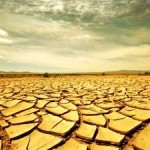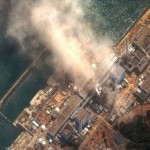
Bonn – Fast action on pollutants such as black carbon, ground-level ozone and methane may help limit near term global temperature rise and significantly increase the chances of keeping temperature rise below 2 degrees Celsius, and perhaps even 1.5 degrees C, a new assessment says.
Protecting the near-term climate is central to significantly cutting the risk of “amplified global climate change” linked with rapid and extensive loss of Arctic ice on both the land and at sea.
Fast action might also reduce losses of mountain glaciers linked in part with black carbon deposits while reducing projected warming in the Arctic over the coming decades by two thirds.
The scientists behind the assessment, coordinated by the United Nations Environment Programme (UNEP) and the World Meteorological Organization (WMO), also point to numerous public health and food security opportunities above and beyond those linked with tackling climate change.
Big cuts in emissions of black carbon will improve respiratory health, reduce hospital admissions and days lost at work due to sickness, says the assessment whose Secretariat is provided by the Stockholm Environment Institute. Indeed close to 2.5 million premature deaths from outdoor air pollution could on average be avoided annually world-wide by 2030 with many of those lives saved being in Asia, it is estimated.
Big cuts in ground level ozone could also contribute to reduced crop damage equal to between one to four per cent of the annual global maize, rice, soybean and wheat production.
Cutting these so-called ‘short-lived climate forcers’ can have immediate climate, health and agricultural benefits, the report concludes. This is because, unlike carbon dioxide (CO2) which can remain in the atmosphere for centuries, black carbon, for example, only persists for days or weeks.
The researchers, however, also underline the fact that while fast action on black carbon and ground level ozone could play a key role in limiting near-term climate, immediate and sustained action to cut back CO2 is crucial if temperature rises are to be limited over the long-term.
It is the combination of action on short-lived climate forcers and long-lived greenhouse gases which improves the chances of keeping below the 2 degree target throughout the 21st Century.
The findings, released June 14 in Bonn, Germany, during a meeting of the UN Framework Convention on Climate Change (UNFCCC) have been compiled by an international team of more than 50 researchers chaired by Drew Shindell of the National Aeronautics and Space Administration (NASA).
Achim Steiner, UN Under-Secretary General and UNEP Executive Director, said, “There are now clear, powerful, abundant and compelling reasons to reduce levels of pollutants such as black carbon and tropospheric ozone along with methane; their growing contribution to climate change being just one of them”.
“This assessment underlines how the science of short lived climate forcers has evolved to a level of maturity that now requires and requests a robust policy response by nations. The experts spotlight how a small number of emission reduction measures – targeting, for example, recovery of methane in the coal, oil and gas sectors through to the provision of cleaner burning cook stoves; particle traps for diesel vehicles and the banning of open burning of agricultural wastes – offer dramatic public health, agricultural, economic and environmental benefits,” he added.
The UNEP/WMO “Integrated Assessment of Black Carbon and Tropospheric Ozone” suggests that action could be catalyzed through not only the UN climate convention process but also via, for example, strengthening existing national and regional air quality agreements.
Michel Jarraud, Secretary-General of the WMO, said, “Most attention is focused on reducing the main greenhouse gas, CO2, to combat climate change. However, in recent years, it has become clear that a range of other pollutants such as black carbon and tropospheric ozone are aggravating the challenge.”
“This report underlines the need for a stronger observational basis and research effort to increase scientific understanding of the role of these other pollutants in the changing climate system. WMO’s Global Atmosphere Watch Programme is addressing these challenges as a priority,” he added.
Drew Shindell of NASA’s Goddard Institute for Space Studies said, “This report has brought clarity to the complexity of the heating and cooling effects of a range of pollutants and uses the science to show that there are clear and concrete measures that can be undertaken to help protect the global climate in the short to medium term.”
“Perhaps the most intriguing link is between emissions of methane and the formation of tropospheric ozone. Methane is a powerful greenhouse gas in its own right, but it has emerged that it is also triggering a great deal more global warming by contributing to the formation of significant levels of ground level ozone – indeed more than was previously supposed. The win-win here for limiting climate change and improving air quality is self-evident and the ways to achieve it have become far clearer as a result of this assessment,” he added.
On June 14, the Government of Sweden announced support for a comprehensive and forward-looking policy assessment to assist governments on the next steps towards fast action on short lived climate forcers. This is inline with Sweden’s strategy on SLCFs and its policy to integrate climate change and air pollution policies.
The work, to be coordinated by UNEP, is expected to be ready in advance of the next Climate Convention meeting scheduled later in the year in Durban, South Africa.














